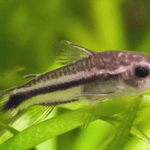Among the hundreds of ancistrus catfish variants, rubber lip plecos (Chaetostoma sp.) rank among the most spectacularly patterned yet overlooked aquarium species. Their unique care requirements demand special attention to details however for success in home setups.
Aquarium Size
These active grazers need ample territory provided through sufficiently large tanks.
75 Gallon Minimum
Even medium-sized rubber lip species require at least a 75 gallon aquarium, with 100+ gallon tanks preferred especially for the larger variants exceeding 10 inches.
Water Conditions
Pay particular attention to maintaining water parameters within precise ranges.
Temperature
Ideal water temperatures for rubber lip plecos range between 70-78°F year round. Use standalone bucket heaters to selectively raise temperatures for these cool water species while leaving community tank levels lower as needed.
pH Levels
Achieving a proper pH proves critical, with rubber lips needing consistent ranges right around 6.4-6.8 in particular. Monitor levels vigilantly since these catfish often develop complicated issues in harder alkaline water.
Currents and Oxygenation
Position powerheads directed along middle tank levels to generate gentle currents across the bottom. Establish additional surface turbulence as well to drive oxygen levels maintaining the higher end plecos prefer.
Filtration Requirements
As prodigious plant and wood chewers generating substantial mess, filtration capacity should get significantly oversized.
Overfilter 3-5 Times
Filter rubber lip aquariums using canister models rated for tanks 3 to 5 times larger than actual volumes present to accommodate their very heavy bio loads produced. Large media baskets allow customization too.
Use Strong Water Flow
Focus upon models moving at minimum 5-10 times tank capacity turnover rates hourly. Optimal filtration proves essential for these sensitive species. Consider installing multiple cascading systems as needed to achieve suitable currents rubber lips appreciate.
Dietary Options
Herbivore foods make up the majority of their diet in home setups.
Leafy Greens
Rubber lip plecos need regular feedings of agricultural greens like spinach, kale and chard blanched to soften them up before binding to hardscape areas using vegetable clips. This allows mess-free grazing.
Quality Driftwood
Provide an assortment of waterlogged malaysian driftwood, cholla branches and seed pods granting both supplemental nibbling and shelter opportunities. These get voraciously demolished steadily.
conclusion
Rubber lip plecos bring exceptional algae extermination capacities provided their particular housing and husbandry needs get adequately fulfilled in home setups. Give them room, establish technical setups facilitating prime water conditions through robust customizable filtration and tend their unique nutritional fare for success keeping these outstanding species long term.
FAQs About Caring for Rubber Lip Plecos
1. What size tank does a rubber lip pleco need?
Individual rubber lip plecos require large solo setups of 75-90+ gallons. However most thrive best maintained in compatible shoals necessitating massive 150+ gallon long tanks to accommodate 8-10 individuals comfortably provided with ample broken sightline territories.
2. Do rubber lipped plecos eat algae?
While grazing on algae frequently found in natural habitats, aquarium-acclimated rubber lips seldom manifest substantial interest in aufwuchs or other ornamental algae within home tanks unfortunately. Never rely upon them solely for cleanup crews.
3. What fish can live with rubber lip plecos?
Select tankmates sharing similar water conditions needs that tolerate cooler water temperatures under 78°F year round. Species like rainbowfish, roseline sharks and giant danios make properly compatible active choices not bothered by rubber lip behaviors or territorial disputes.
4. Can rubber lip plecos live in a pond?
Yes, provided chilling equipment gets installed allowing maintenance of suitable thermal regimes under 80°F including internal pond pumps safely heating during winter months. Ensure adequate hideaways exist guarding against predation since rubber lips fall prey to larger aggressive pond inhabitants easily.
5. What do baby rubber lip plecos eat?
Young rubber lipped plecos require increased protein levels to sustain rapid juvenile growth rates. Supplement usual wood and green fare with blanched zucchini, occasional meaty bottom feeder pellets and calcium-enriched freeze dried offerings until reaching maturity thresholds around 3-4 inches long.




